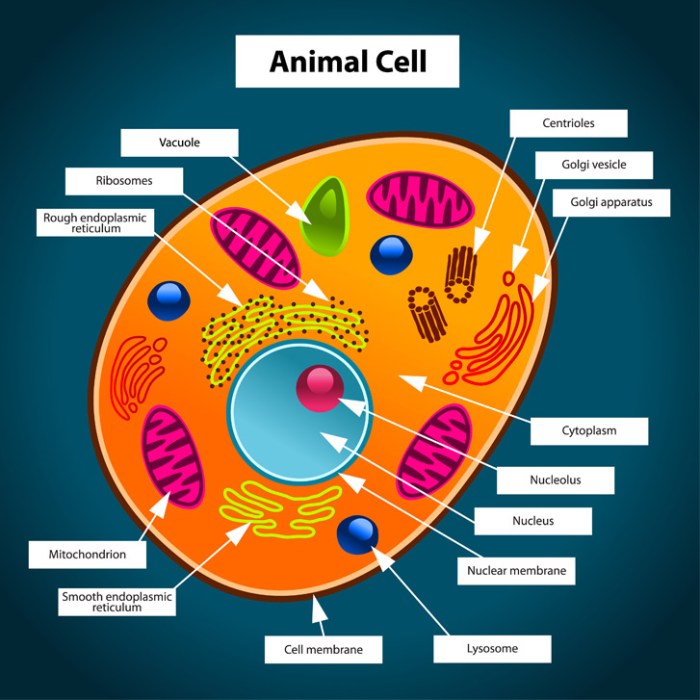Designing a Printable Animal Cell Coloring Page: Animal Cell Coloring Printable

Animal cell coloring printable – Creating a fun and educational animal cell coloring page requires careful consideration of design, color palette, and shading techniques. The goal is to produce a printable sheet that is both engaging for children and accurately represents the structure of an animal cell. This will ensure a learning experience that is both enjoyable and informative.
A simple yet detailed design is crucial for a successful coloring page. The complexity needs to be balanced; too simple, and it lacks educational value; too complex, and it becomes overwhelming for young colorists. We need to focus on the key organelles and their relative positions within the cell membrane. The design should be easily printable on standard letter-sized paper, leaving enough white space around the cell to avoid overcrowding.
Animal Cell Design and Organelle Representation, Animal cell coloring printable
The design should begin with the cell membrane, a rounded shape enclosing all the organelles. The nucleus, a large, centrally located organelle, should be clearly defined and noticeably larger than other organelles. The nucleolus, a smaller structure within the nucleus, can be depicted as a smaller circle inside the nucleus. The endoplasmic reticulum (ER) can be represented as a network of interconnected tubes and sacs, both rough (with ribosomes depicted as small dots) and smooth.
Mitochondria, the powerhouses of the cell, can be depicted as bean-shaped structures scattered throughout the cytoplasm. Lysosomes, Golgi apparatus, and ribosomes (outside the rough ER) can be represented as smaller, simpler shapes distributed appropriately throughout the cell. Vacuoles can be included as smaller, irregular circles. The size relationships should be approximately accurate, with the nucleus being significantly larger than other organelles, and the ER forming a noticeable network.
Recommended Color Palette
Choosing the right colors is essential for accurate representation and visual appeal. The cell membrane can be a light brown or beige, providing a neutral background. The nucleus can be a light purple or pink, while the nucleolus can be a darker shade of the same color. Mitochondria can be depicted in a reddish-brown or deep orange, reflecting their energy-producing role.
The rough endoplasmic reticulum can be a pale green, with the ribosomes represented as darker green dots. The smooth endoplasmic reticulum can be a slightly lighter shade of green. The Golgi apparatus can be a light yellow or gold, and lysosomes can be a light blue or lavender. Ribosomes (those outside the rough ER) can be a dark blue or grey.
Finally, vacuoles can be a pale yellow or orange. Using a variety of pastel shades enhances visual appeal without overwhelming the page.
Shading Techniques for Depth and Dimension
Adding shading enhances the three-dimensionality of the cell and increases visual interest. Simple shading techniques are recommended for a coloring page aimed at children. Light shading can be used to give the organelles a sense of volume. For example, lighter shades can be used on the “top” or “bulging” parts of the organelles, while darker shades are used in the “recessed” or “shadowed” areas.
This simple technique adds depth without being overly complicated. The use of cross-hatching or stippling can also add subtle texture and visual interest to certain organelles, such as the mitochondria or the endoplasmic reticulum. The key is to keep it simple and effective, allowing children to easily add depth to their coloring while learning about the structure of an animal cell.
Animal cell coloring printables offer a fantastic way to learn cell biology; the detailed structures provide a great visual aid. For a different kind of animal-themed coloring, check out the adorable precious moments animals coloring pages ; they’re a fun contrast to the scientific accuracy of the cell diagrams. Returning to the cellular level, remember to color the nucleus and cytoplasm accurately in your animal cell printable!
